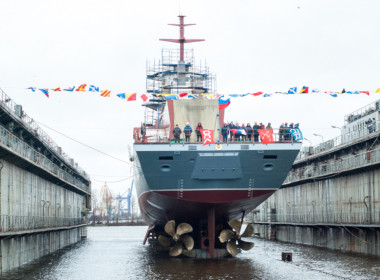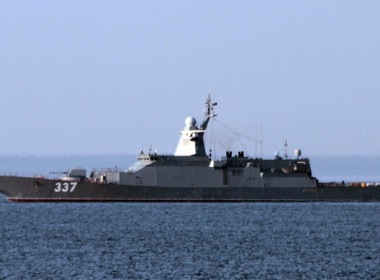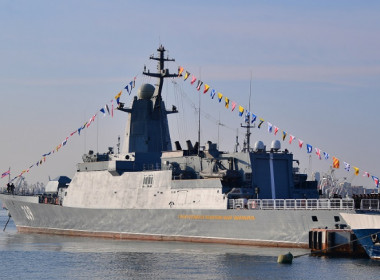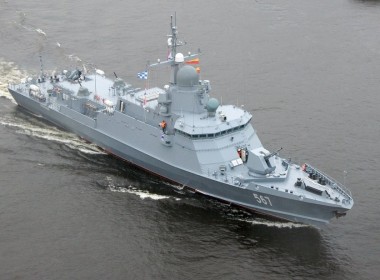VESSEL REVIEW | Rezkiy – Russian Navy corvette optimised for coastal operations

Amur Shipyard, a division of Russia’s state-owned United Shipbuilding Corporation, has handed over a new Project 20380 or Steregushchiy-class corvette to the Russian Navy for operation by the Russian Pacific Fleet.
Rezkiy and its sisters were designed to replace the Russian Navy’s Grisha-class corvettes that were originally designed in the 1970s. Whereas the Grishas were built primarily for anti-submarine warfare (ASW), the Steregushchiy-class ships were designed from the outset as multi-purpose vessels. Specifically, the newer corvette class is capable of operating in littoral and coastal waters for missions including ASW, anti-surface warfare, patrol, escort, and naval gunfire support for amphibious landings.
The corvette has a steel hull, a composite superstructure that also includes fire-resistant FRP, a length of 104.5 metres, a beam of 11.6 metres, a draught of 3.7 metres, a displacement of 2,200 tonnes, and accommodations for 90 crewmembers. Low-observable technologies such as radar-absorbent material were incorporated in both the hull and the superstructure to reduce the vessel’s radar signature.

Four Kolomna 16D49 4,400kW engines in a combined diesel and diesel (CODAD) arrangement propel Rezkiy to a maximum speed of 27 knots while a cruising speed of 14 knots will enable it to sail up to 4,400 nautical miles. The onboard systems draw electrical power from four generators.
The vessel’s armament consists of a 100mm naval gun, anti-ship missiles, torpedoes, 30mm close-in weapon systems, and two 14.5mm pintle-mounted machine guns. A combat management system collates the data provided by the array of radars and sonars and enables the crew to more effectively detect, analyse, and engage or evade airborne, surface, and sub-surface threats.
Also fitted are a flight deck and hangar for use by an ASW helicopter or an unmanned aerial vehicle, an electronic countermeasures system to provide passive defence against hostile missiles, and four decoy launchers.
Design work on Rezkiy was provided by Almaz Central Design Bureau. The Russian Navy plans to acquire at least 30 Project 20380 vessels for assignment to all four of the service’s major fleets.
Some of our readers have expressed disquiet at our publication of reviews and articles describing new vessels from Russia. We at Baird Maritime can understand and sympathise with those views. However, despite the behaviour of the country’s leaders, we believe that the maritime world needs to learn of the latest developments in vessel design and construction there.
| Rezkiy | |
| SPECIFICATIONS | |
| Type of vessel: | Corvette |
| Flag: | Russia |
| Owner: | Russian Navy |
| Designer: | Almaz Central Design Bureau, Russia |
| Builder: | Amur Shipyard, Russia |
| Hull construction material: | Steel |
| Superstructure construction material: | Composite |
| Length overall: | 104.5 metres |
| Beam: | 11.6 metres |
| Draught: | 3.7 metres |
| Displacement: | 2,200 tonnes |
| Main engines: | 4 x Kolomna 16D49, each 4,400 kW |
| Generators: | 4 |
| Maximum speed: | 27 knots |
| Cruising speed: | 14 knots |
| Range: | 4,400 nautical miles |
| Other electronics: | Combat management system; electronic countermeasures system |
| Armaments: | 100mm naval gun; anti-ship missiles; torpedoes; 30mm close-in weapon systems; 2 x 14.5mm machine guns |
| Other equipment installed: | 4 x decoy launchers; helicopter deck; hangar |
| Type of fuel: | Diesel |
| Crew: | 90 |









